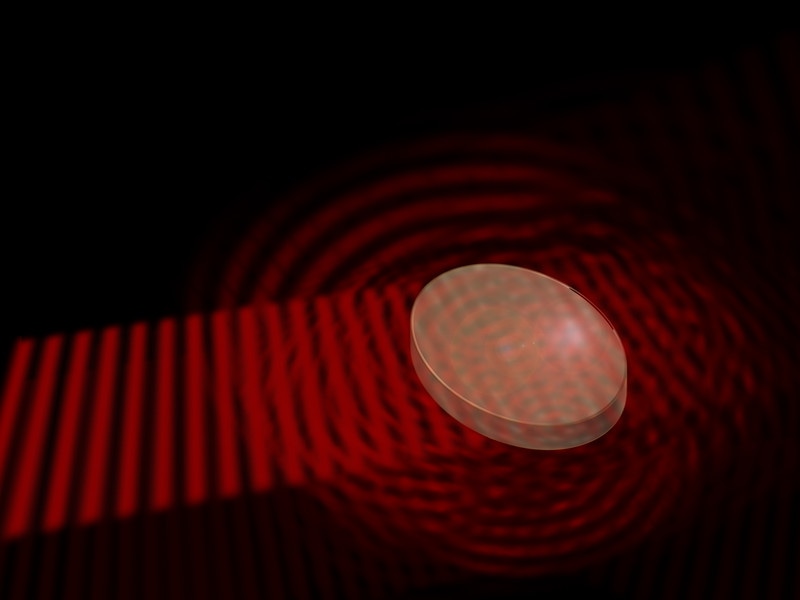Sep 15 2017
Researchers at TU Wien have developed a new cloaking technology: a special type of material is irradiated from above in such a way that another beam of light can pass in an entirely uninhibited manner.
 A material with random irregularities scatters an incident light wave into all directions. Credit: TU Wien
A material with random irregularities scatters an incident light wave into all directions. Credit: TU Wien
How can an object be made invisible? Researchers, from TU Wien (Vienna), collaborated with colleagues from Greece and the USA, to develop a new concept for a cloaking technology. A totally opaque material is irradiated from above with a particular wave pattern – with the effect that light waves from the left are now capable of passing through the material without any obstruction. Totally new possibilities for active camouflage are opened up by this surprising result. It is possible to apply this idea to various types of waves, and it should work with sound waves in the same manner as with light waves. Experiments are already in the planning stage.
Outwitting the Scattering of Light
Complex materials such as a sugar cube are opaque, because light waves inside them are scattered multiple times. A light wave can enter and exit the object, but will never pass through the medium on a straight line. Instead, it is scattered into all possible directions.
Professor Stefan Rotter (TU Wien)
For years several different attempts have been developed to outwit this type of scattering, producing a “cloak of invisibility”. For instance, special materials have been worked out, such as those that are capable of guiding light waves around an object. On the other hand, experiments have been performed with objects that are capable of emitting light by themselves. When an electronic display transmits exactly the same light as it absorbs in the back, it can indeed appear invisible, at least when looked at in the right angle.
A more central approach has presently been chosen at TU Wien. “We did not want to reroute the light waves, nor did we want to restore them with additional displays. Our goal was to guide the original light wave through the object, as if the object was not there at all”, says Andre Brandstötter, one of the authors of the study. “This sounds strange, but with certain materials and using our special wave technology, it is indeed possible.”
The Laser Material
The TU Wien team has spent years working on optically active materials, which are employed for developing lasers. Energy has to be supplied through a pump beam in order to make the laser shine. Otherwise, the laser material acts just like any other material – it absorbs part of the incident light.
“The crucial point is to pump energy into the material in a spatially tailored way such that light is amplified in exactly the right places, while allowing for absorption at other parts of the material”, says Professor Konstantinos Makris from the University of Crete (previously TU Wien). “To achieve this, a beam with exactly the right pattern has to be projected onto the material from above – like from a standard video projector, except with much higher resolution.”
If this pattern effortlessly corresponds to the inner irregularities of the material, which generally scatter the light, then the projection from above can efficiently switch off the scattering, and another beam of light travelling via the material from one side will be able to pass without any obstruction, loss or scattering.
Mathematically, it is not immediately obvious that it is at all possible to find such a pattern. Every object we want to make transparent has to be irradiated with its own specific pattern – depending on the microscopic details of the scattering process inside. The method we developed now allows us to calculate the right pattern for any arbitrary scattering medium.
Rotter.
Light or Sound
Computer simulations have demonstrated that the method works. It is now essential to confirm the idea in experiments. Stefan Rotter is positive that this will be successful: “We are already discussing with experimentalists how this could be done. As a first step, we may test this technology with sound instead of light waves. Experimentally, they are easier to handle, and from a mathematical point of view, the difference does not matter significantly.”